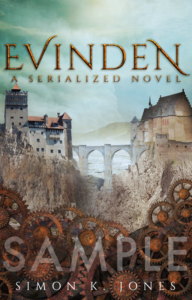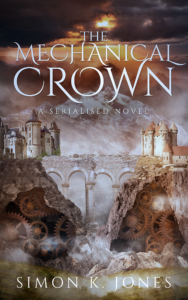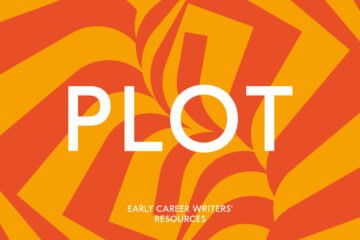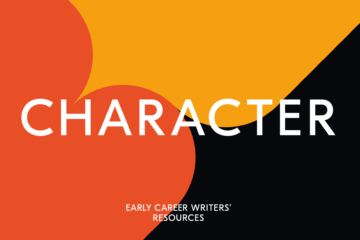Titles are massively important and often irritatingly elusive. If you publish in a serialised, weekly format like me you need to figure out titles right up front, before you’ve written the whole story. You get more breathing space if you’re publishing traditionally, or self-publishing a completed, edited ebook, but at some point you still need to commit.
Photo by chuttersnap on Unsplash
Identifying an effective title can be the difference between a reader picking up your book or ignoring it. Titles exist in an awkward spot halfway between artistic intent and marketing. Publishers and agents will push for titles which help to sell the book, while as an author you might be hunting for something truthful.
These things aren’t mutually exclusive, fortunately. There will be a title which captures the crux of the story, while also attracting the attention of readers and helping to shift copies. The trick, really, is in knowing and understanding the story sufficiently to give you both the insider view and an observer’s vantage point. The more in sync you are with your readers and the themes of the story, the easier it will be for titles to emerge which hit all the necessary points.
Finding the right title is likely to be an evolutionary process, which can’t be forced or hurried. That was a particular challenge for me when I began publishing my serialised fantasy novel. I’d already chosen the launch date for the book but had yet to settled on a title – in fact, I was still working with the work-in-progress title from the first draft. Over-attachment to working titles is a real challenge, requiring the ability to detach yourself from the work and view it afresh.

An early version of the cover, still with the original title.
And thus the first dozen-or-so chapters went out under the name Evinden. It’s a pleasant-sounding word which means absolutely nothing, given that it’s the name of the fictional continent in the story. It had resonance and meaning to me but said nothing to new and potential readers. I was uncomfortable with the title from the start and began workshopping a bunch of alternatives. This was all happening while the book was already going out, chapter-by-chapter, in its serialised form – the ability to adapt and shift and change is a major benefit of online serialisation; that it all happens in public is somewhat nerve-wracking.
To begin with, keep things loose and don’t worry about early title ideas being terrible. It’s unusual to stumble upon a great idea without first wading through many bad ones.
I started off by jotting down a few starting ideas:
- The Unknown Jewel
- The Secret Valley
- Of Secrets & Facades
- Secrets & Delusions
- The country at the centre of the world
The focus here was primarily on geography, trying to turn the fictional location-based working title of ‘Evinden’ into something more universal and immediately intriguing. The idea of secret and lies kept recurring, too, as the story is in large part about belief and misunderstandings. ‘The Unknown Jewel’ is an appalling title, but is the first step in the right direction – not that I knew it at the time.
The next round of ideas – and I was working on these ideas over several days, allowing them to percolate through my brain – ended up with these options:
- Crown of the World
- The World’s Crown
- What happens below
- Below the city
- Beneath the surface
- The Isolated Country
- We Need No Others
- A Kingdom Alone
- Kingdom Alone
- Kingdom of Isolation
- Crown of the World
- The World’s Crown
- What happens below
- Below the city
- Beneath the surface
- The Isolated Country
- We Need No Others
- A Kingdom Alone
- Kingdom Alone
- Kingdom of Isolation
You can see how I went quite far down all kinds of weird routes before abandoning them. Sometimes an idea has to be exhausted before you realise it’s not the right one. Frustrating, but necessary. As long as you keep the ideas flowing and allow yourself to be wrong, and to continue iterating, eventually you’ll start making genuine progress.
The third phase is where things got interesting:
- Liars and Magic
- Liars and Kings
- Lies and Power
- Like Clockwork
- Clockwork Masks
- Clockwork Faces
- A Clockwork Mask
- The Clockwork Kingdom
- Clockwork Isolation
- A Clockwork Crown
- The Clockwork Crown
- The Mechanical Crown
After a detour through the theme of lying, I then ended up exploring a clockwork metaphor that then mutated at the last moment into being ‘mechanical’. This combined with the concept of the ‘crown’ which had showed up earlier, forming the book’s title: The Mechanical Crown. It’s a title I’m still very happy with, as it immediately conjures a distinct visual concept, while retaining an enigmatic element that demands explanation. It serves to attract a reader’s attention with the visual idea, and then hooks them in with the promise of the reveal within the text.
 It’s also a title which is able to be represented in the book’s cover design, which depicts a castle atop a dramatic landscape, with enormous mechanisms hidden just below ground. It’s intended to suggest the hidden nature of true power, which is a core theme of the book, and the castle towers atop the cliffs don’t look unlike the decoration on a crown.
It’s also a title which is able to be represented in the book’s cover design, which depicts a castle atop a dramatic landscape, with enormous mechanisms hidden just below ground. It’s intended to suggest the hidden nature of true power, which is a core theme of the book, and the castle towers atop the cliffs don’t look unlike the decoration on a crown.
Tips for finding a title
The example above is specific to my book, but if you’re struggling to identify a title for your current project you can definitely make use of the same approach.
- Don’t let obsessing over the title stop you from writing the actual text
- Don’t get overly attached to working titles
- Identify the themes of your book: this will help you find a title which represents the story and appeals to the right readers
- When you’re workshopping titles, embrace all ideas – especially the bad ones
- Don’t dismiss bad ideas: work at them, as they sometimes transform into great ideas
- Work on your title over several sessions, and give yourself the time and space to consider the ideas with fresh eyes



0 Comments